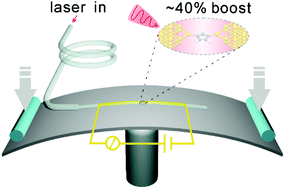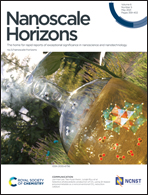In situ photoconductivity measurements of imidazole in optical fiber break-junctions†
Abstract
We developed a method based on the mechanically controllable break junction technique to investigate the electron transport properties of single molecular junctions upon fiber waveguided light. In our strategy, a metal-coated tapered optical fiber is fixed on a flexible substrate, and this tapered fiber serves as both the optical waveguide and metal electrodes after it breaks. For an imidazole bridged single-molecule junction, two probable conductance values below 1G0 are observed. The higher value shows an approximately 40% enhancement under illumination, while the lower one does not show distinguishable difference under illumination. Theoretical calculations reveal these two conductance values resulting from the imidazole monomer junction and the imidazole dimer junction linked via a hydrogen bond, respectively. In imidazole monomer junctions, the absorption of a single photon strongly shifts the transmission function resulting in optical-induced conductance enhancement. In contrast, the transmission function of imidazole dimer junctions remains at the same level in the bias window despite the light illumination. This work provides a robust experimental framework for studying the underlying mechanisms of photoconductivity in single-molecule junctions and offers tools for tuning the optoelectronic performance of single-molecule devices in situ.



 Please wait while we load your content...
Please wait while we load your content...